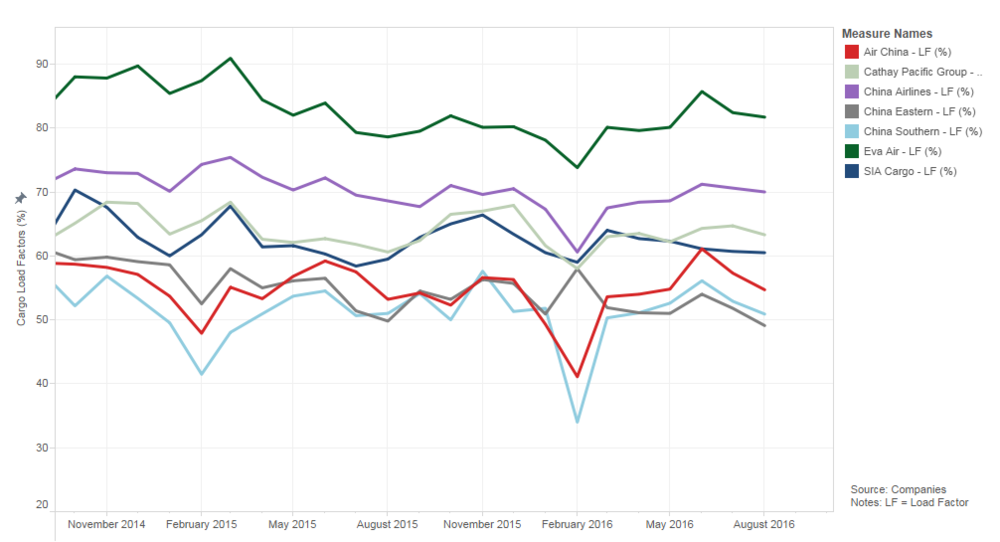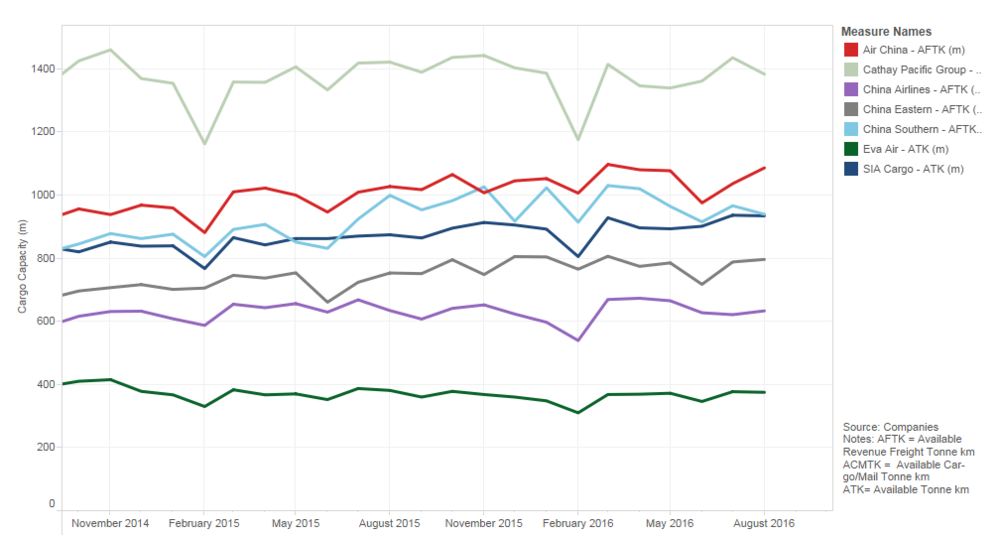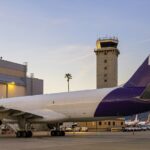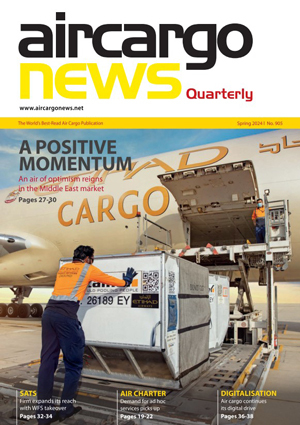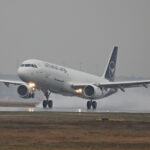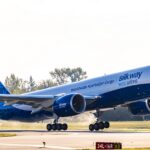Asian Cargo Monthly: Southern sees demand slide while rivals grow
03 / 10 / 2016
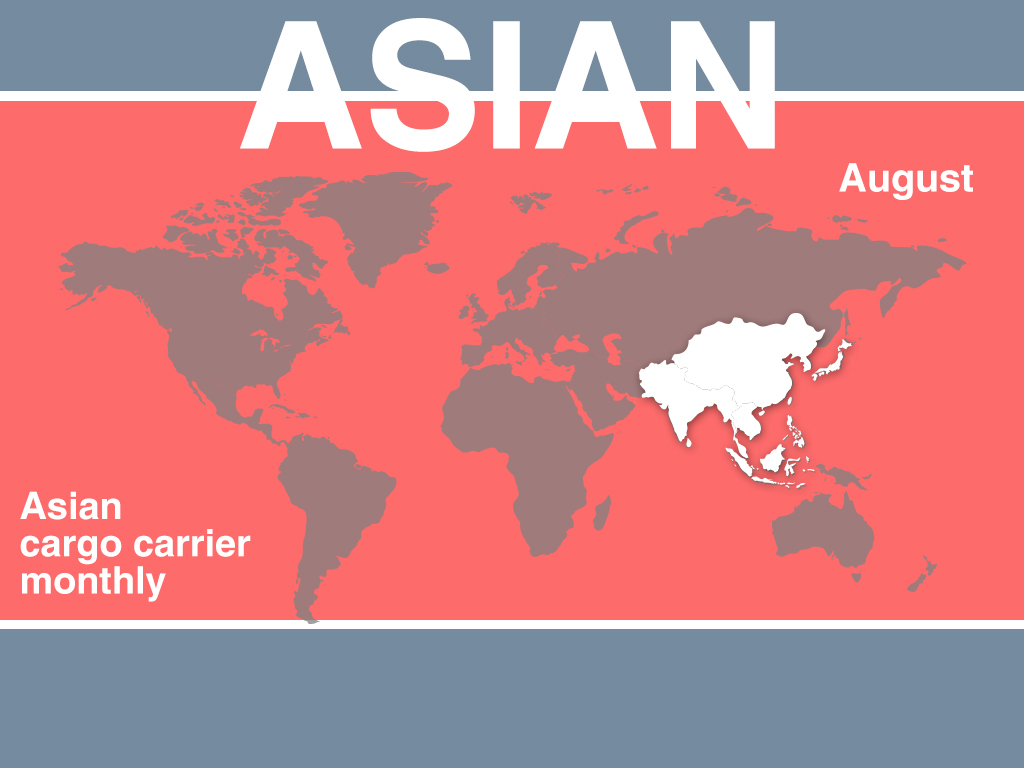
Air cargo demand at the leading Asia-based carriers continued to improve in August, although China Southern suffered a dip in form.
Of the seven carriers included in the Air Cargo News monthly round-up, six managed to recorded an improvement in air cargo traffic during August as demand continued to pick up compared with earlier in the year.
However, perhaps the most noteworthy performance during the month came from fast growing China Southern.
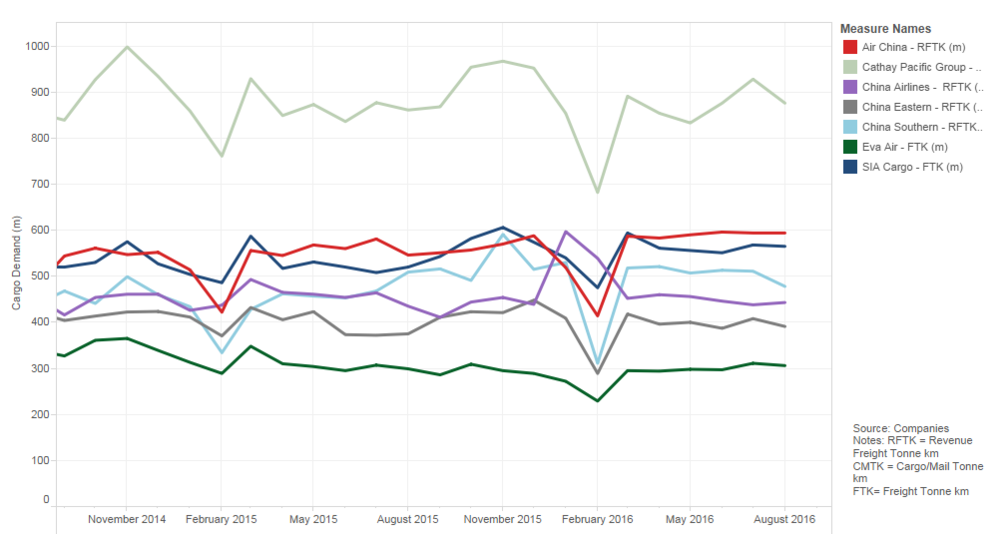
The airline, which achieved double-digit demand growth in 2012, 2014, 2015 and in five of the first eight months of 2016, suddenly recorded a 5.9% decline in demand in August to 478m revenue freight tonne km.
The decline roughly coincides with the start of a spike in demand last year that saw the airline improve by double digit levels from August 2015 through to June of this year – although there was also a decline in February related to the US west coast port strike in 2015.
This indicates that perhaps this year’s decline was down to the strength of last year rather than a complete change of strategy in 2016.
However, the airline’s performance figures for September will be greatly anticipated to see whether the drop was a one off or if it is entering a phase of lower growth.
Capacity was down by 6% for the month while load factor slipped to 50.9% from 51% last year.
For the region’s busiest cargo carrier, Cathay Pacific, August was the third month in a row of cargo demand growth as it registered an 8.8% improvement to 594m revenue tonne km – its busiest August on record.
Cathay Pacific general manager cargo sales and marketing Mark Sutch said: “Overall cargo demand in August was reasonably robust and tonnage continued to stabilise.
“Freighters on our North American routes were generally full. We now see the momentum for exports out of Hong Kong and Mainland China building.
“As expected, the yields are gradually improving although there remains a gap when compared with the same period last year.
“We are planning to operate our maximum freighter schedule over the coming peak to match with the forecast demand from various new product launches.”
Meanwhile, capacity at the airline was down by 2.7% and as a result its load factor increased to 63.3% from 60.6% last year.
The largest increase of the Asia carriers came from Air China, which registered an 8.8% improvement to 594m revenue tonne km.
The carrier has registered improvements in demand every month of the year so far, other than February, so the increase is no surprise. However, it is the largest year-on-year increase registered by Air China in 2016.
Meanwhile, capacity was up 5.7% and its load factor reached 54.7%.
Singapore Cargo saw demand increase by 8.6% to 565m revenue tonne km, there was a 2.3% improvement at Eva Air to 306m freight tonne km, China Airlines registered growth of 1.8% to 443m freight revenue tonne km and demand at China Eastern was up 4.3% to 391m freight tonne km.
